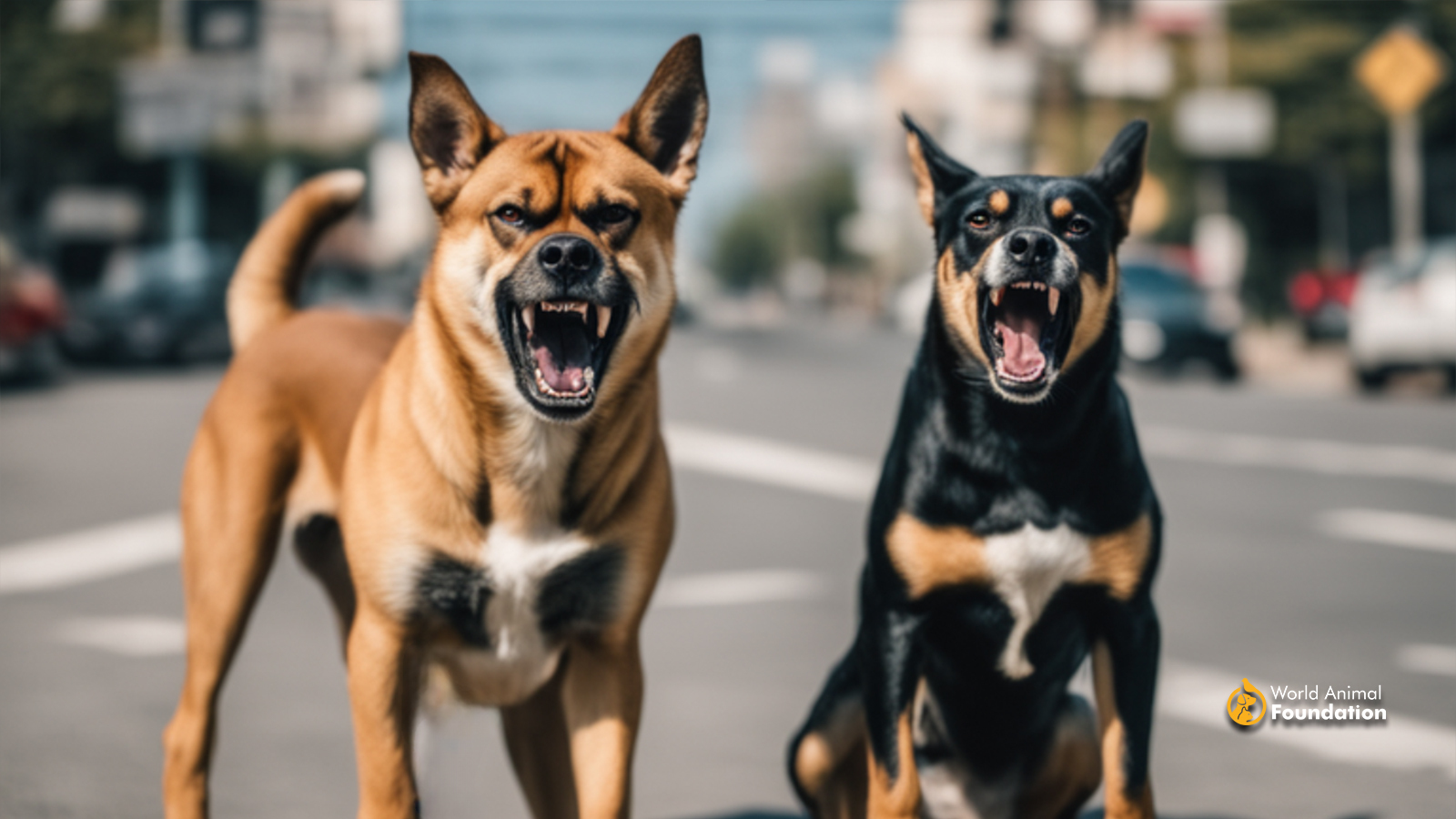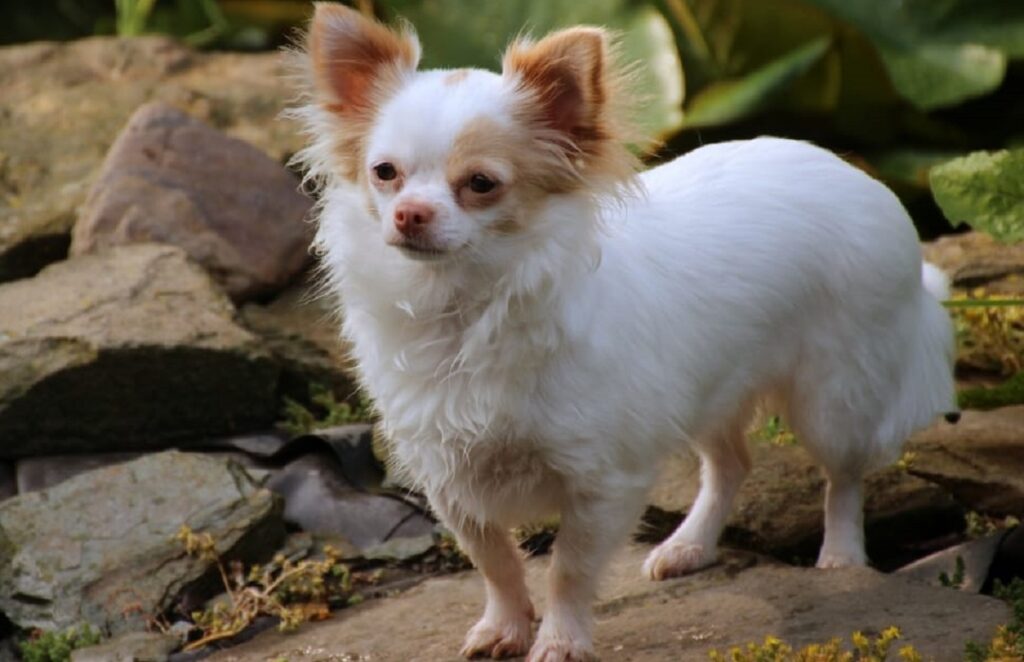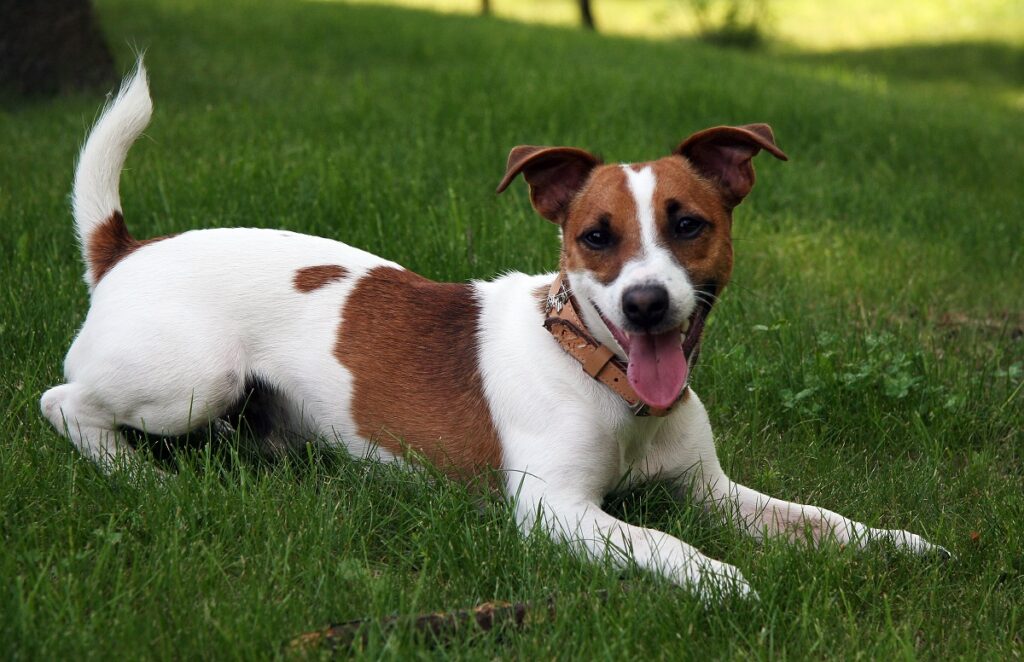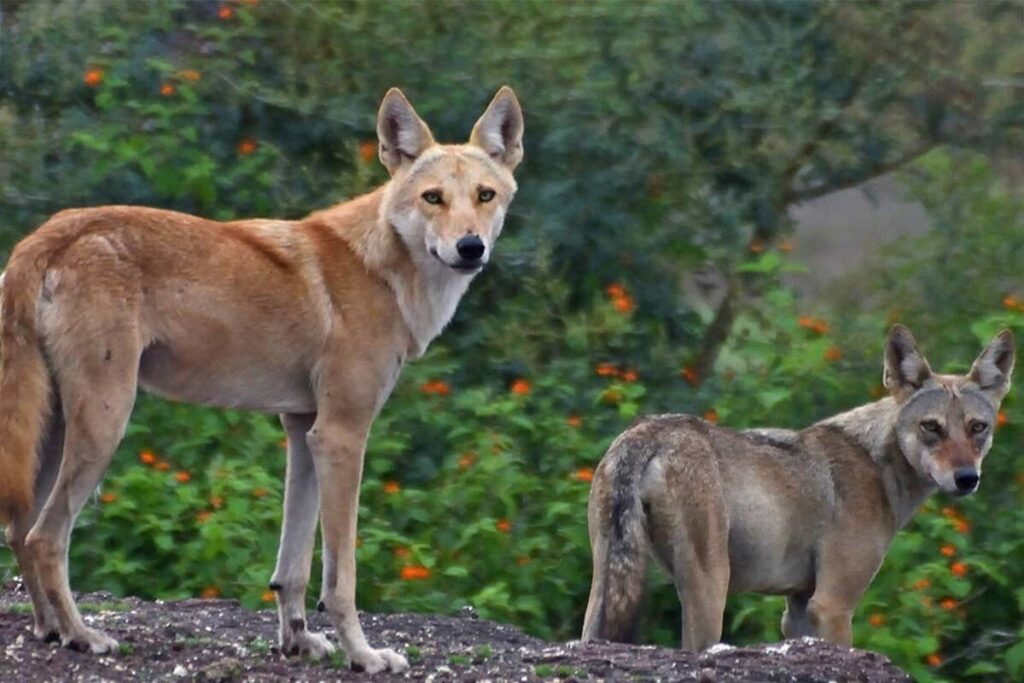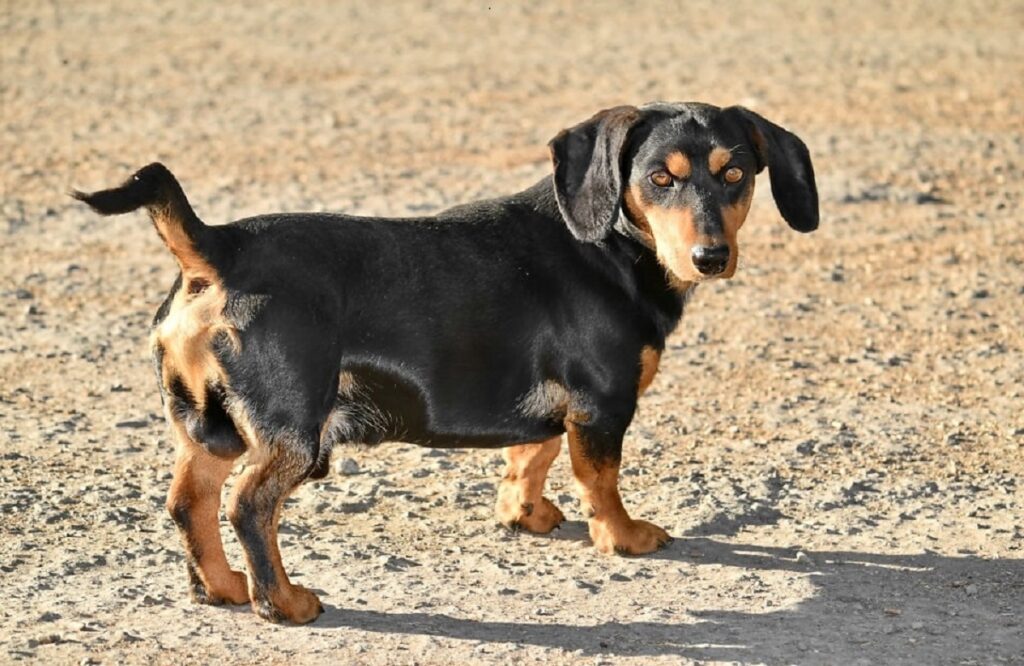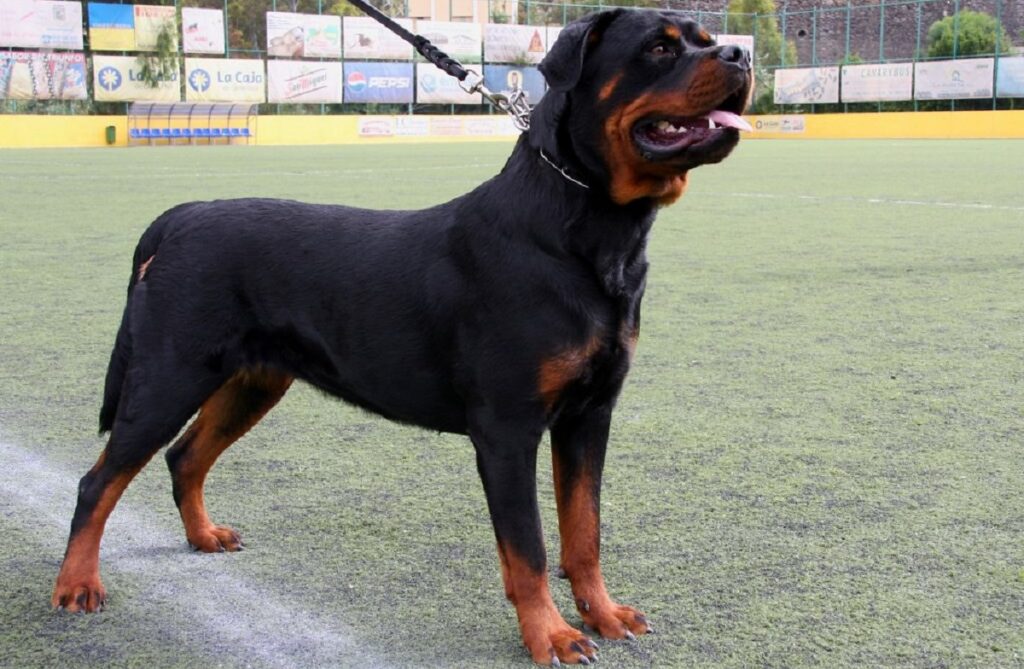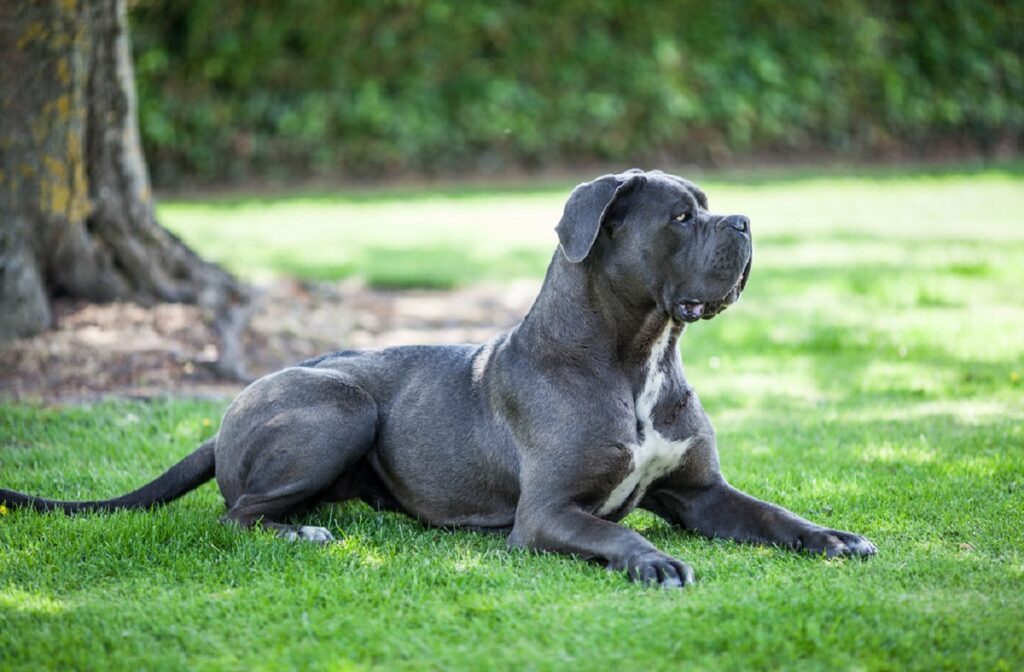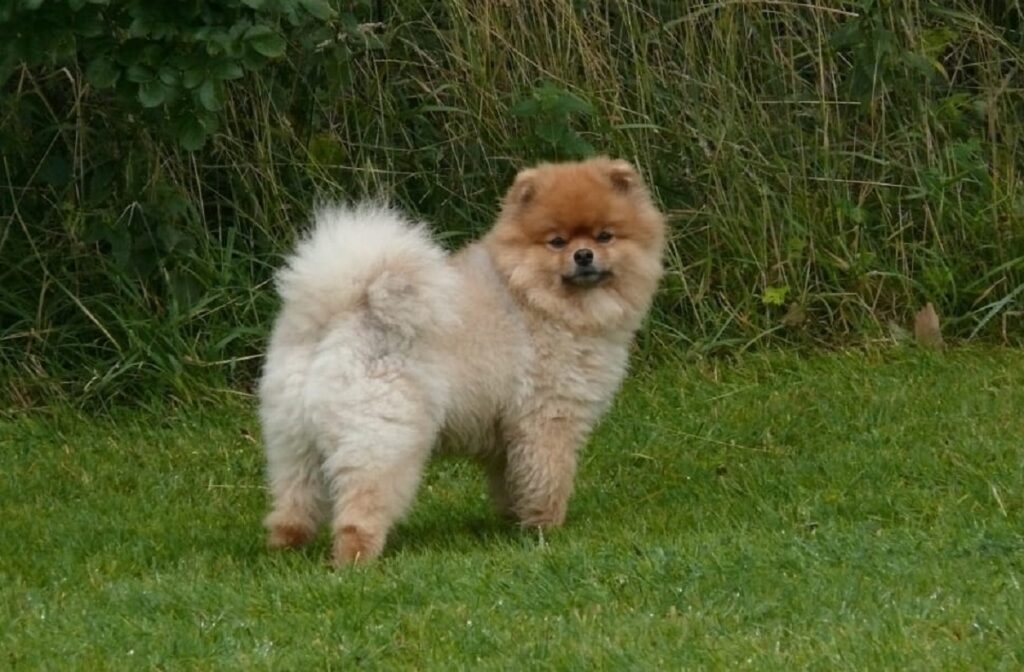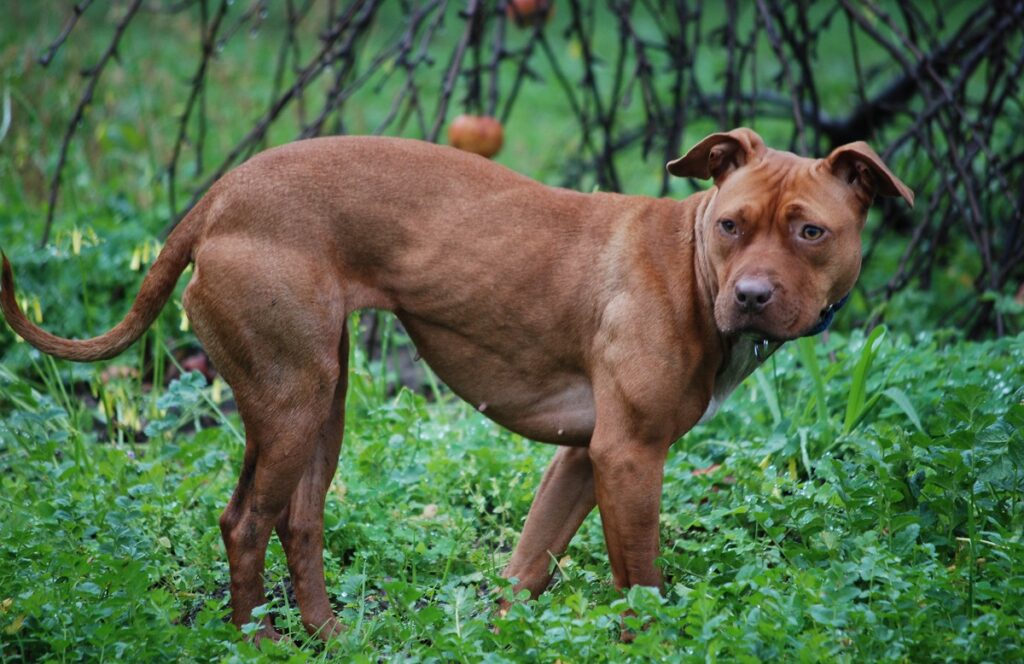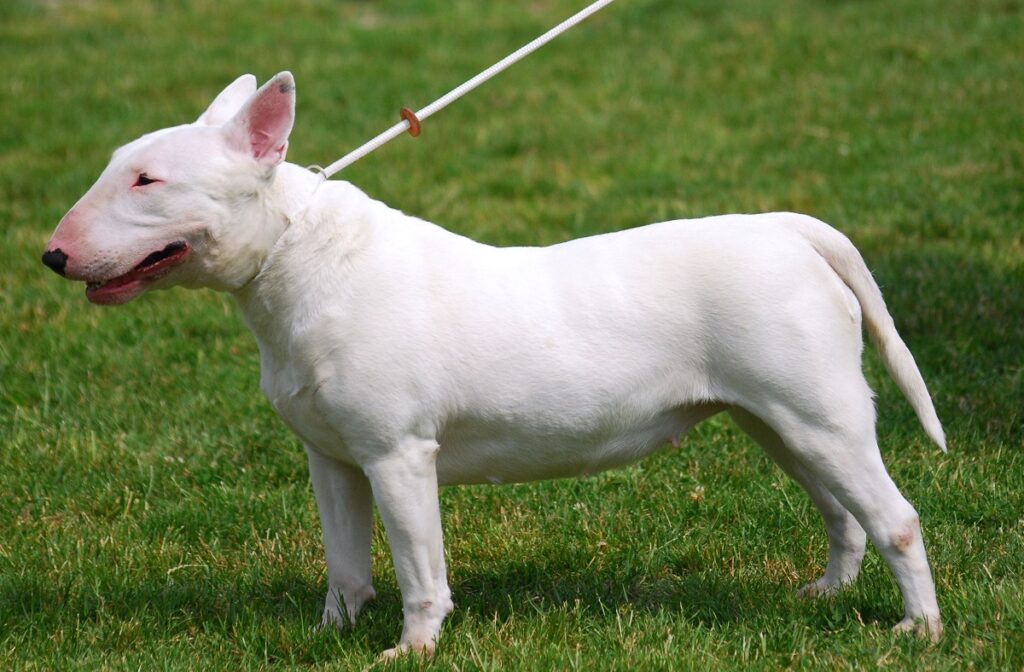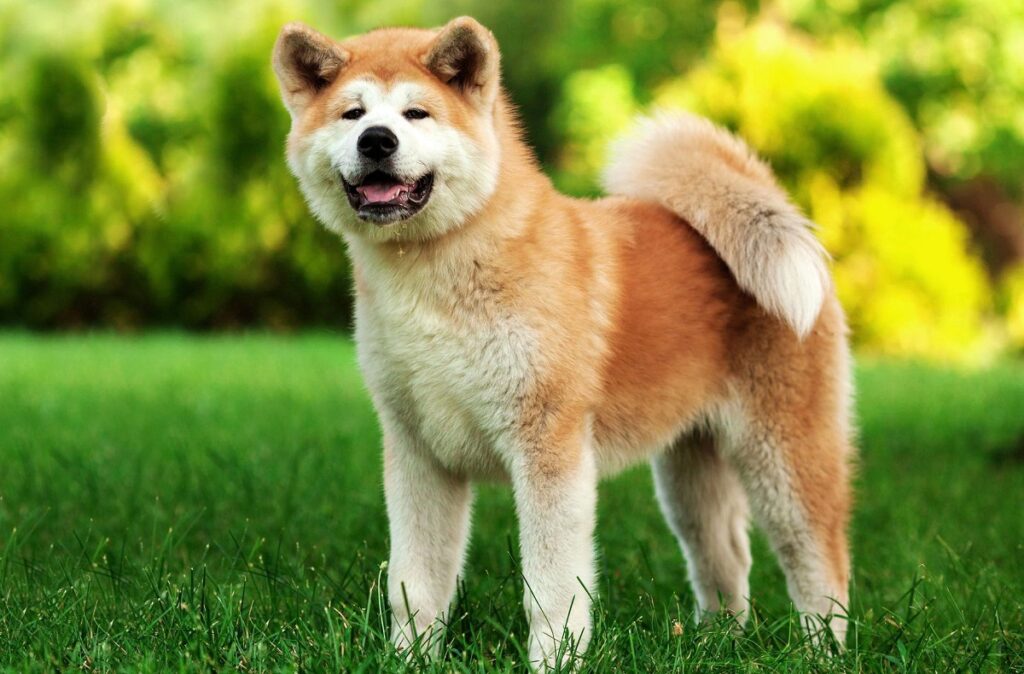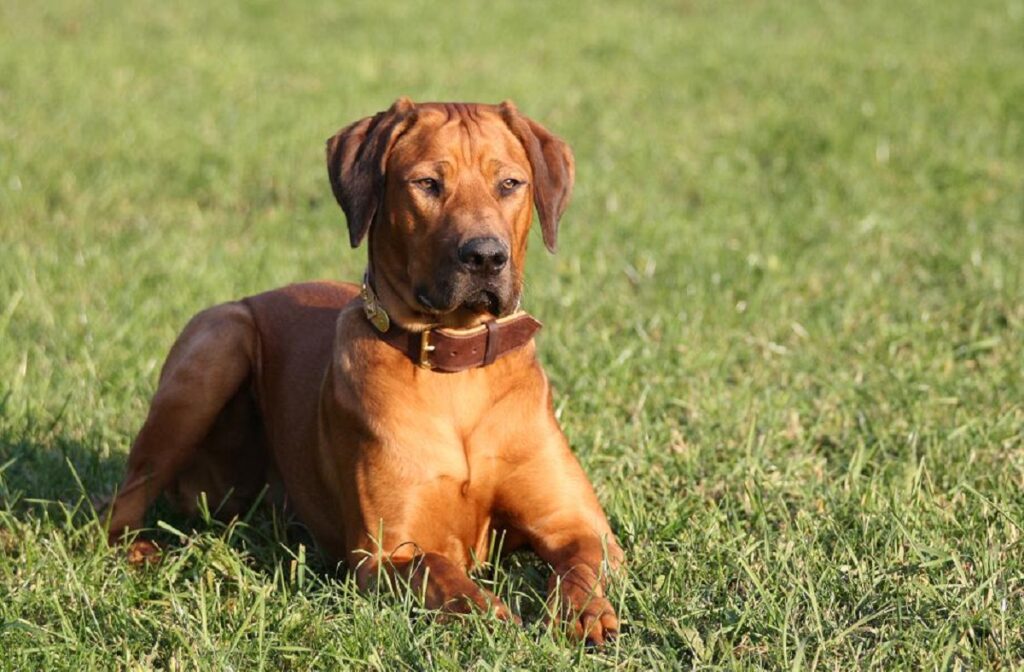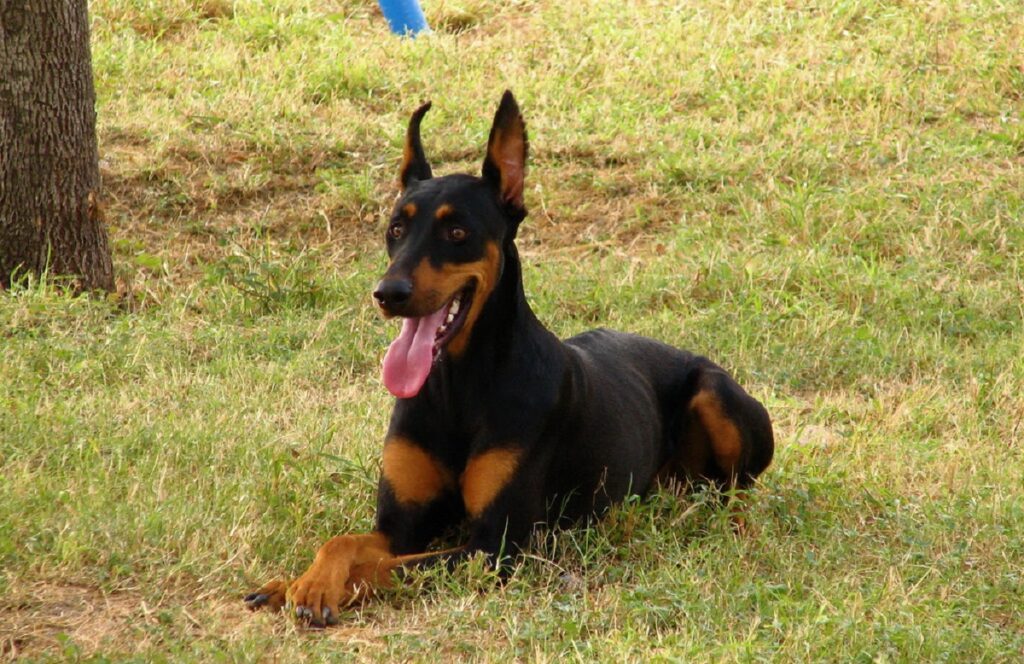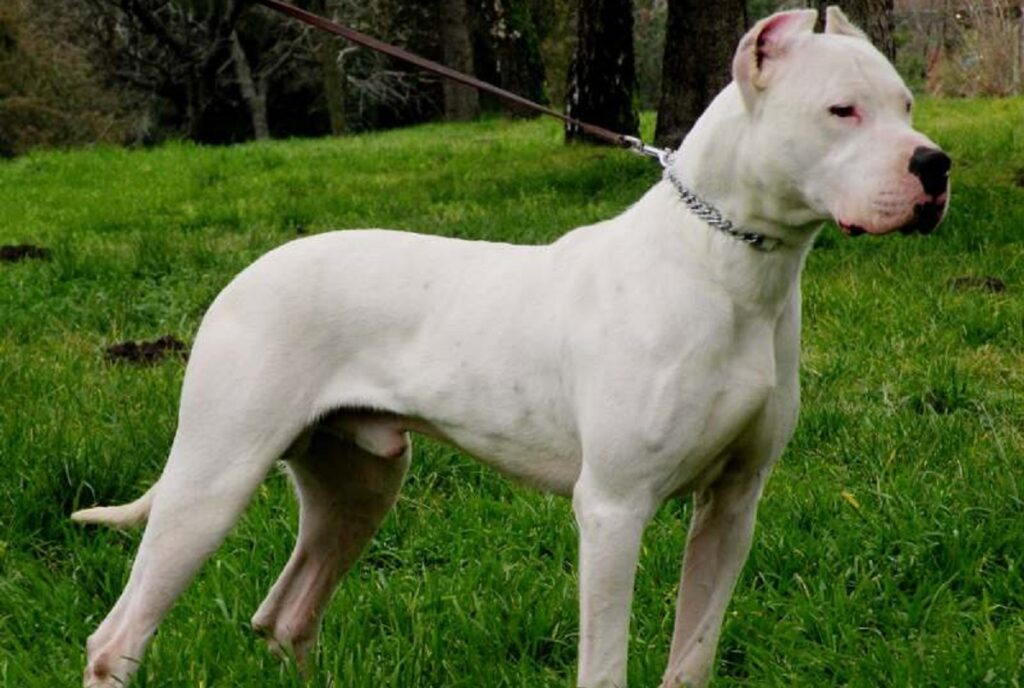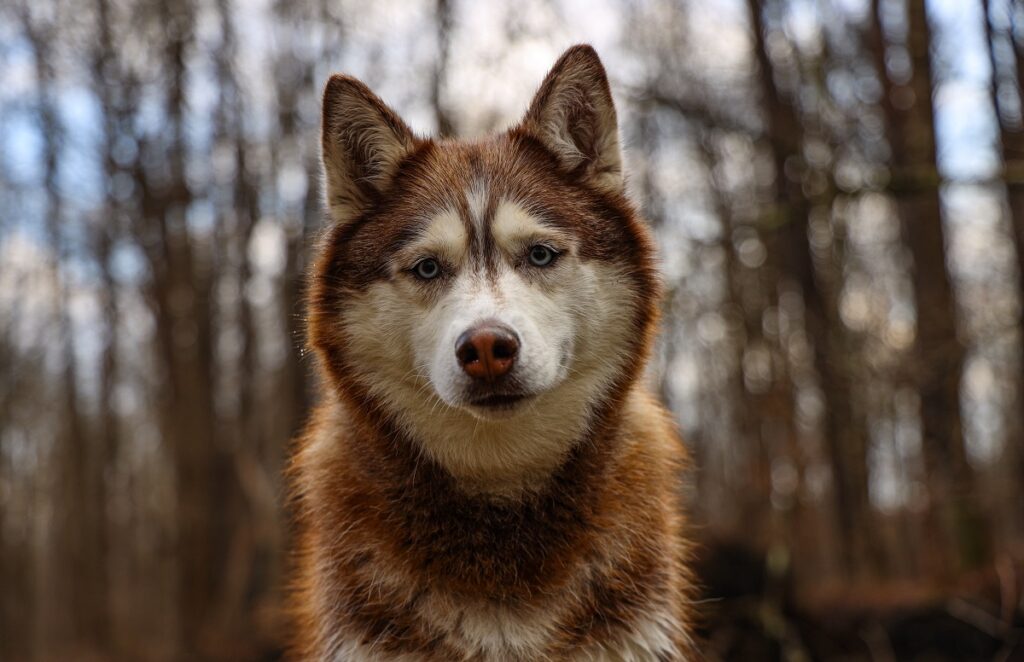Aggression in dogs isn’t always black and white, and breed alone doesn’t tell the whole story. “Top 15 Most Aggressive Dog Breeds” lists often circulate, igniting debate and perpetuating stereotypes. But do these lists reflect scientific truth or simply fuel misconceptions? In 2024, with a deeper understanding of canine behavior, we’ll delve into the factors that contribute to aggression, separating myth from reality. Join us as we examine the science behind canine aggression and explore whether these “top 15” lists are helpful guides or harmful generalizations.
Let’s get one thing straight. This article isn’t one of “dog bashing” since dogs are one of my life’s necessities. But there are dogs that are more aggressive than others, and that’s what this information is all about.
The definition of aggressive is “ready or likely to attack or confront,” and the most aggressive dog breeds should be put into this category.
When you hear “aggressive,” your mind may conjure up a Doberman pinscher or a German shepherd, but there are smaller canines that could make you want to run home to your mama.
Here’s some food for thought… Does “aggressive” mean “dangerous?” And are certain breeds born with aggressive genes? We have answers for you. So, let’s talk about the large, the small, and everything in between dogs as we get into the most aggressive dog breeds.
Understanding Canine Aggression
According to the Royal Society for the Prevention of Cruelty to Animals (RSPCA), “Aggression is one of many behaviors dogs use to help them cope.” And this is key. A dog will communicate signs of being uncomfortable before aggression even begins. Dogs don’t go from being comfortable and passive to being aggressive with no signals.
Things like the following can all be signs that may preface an actual dog bite:
- Ear position (Backward or flat)
- Lip position (Clenched/Tight)
- Tail position (Straight down or stiffly held out)
- Body language (Circling, hunched, sporadic movement, and/or lunging)
- Exposed teeth (Snarling)
- Growling
- Snapping
- Hard stare
- Barking
And aggression doesn’t always mean biting. Any of the conduct above could be considered aggressive behavior.
Generally, it doesn’t happen out of the blue. Situations that can be investigated include:
- Appropriateness of the situation,
- Extent to which or nature of the provocation that may have been involved
- Information about how the dog was acquired
- Household or environmental situation
- Socialization of the dog
- Age
- Use of confrontation or positive punishment by the guardian
- First-hand observations of the dog’s body postures
- Behavioral propensities of the dog
These factors can all be evaluated when considering why a dog might be aggressive.
When I was younger, I had no healthy fear of dogs. None. I’ve also been bitten twice, with one of those times garnering a visit to the emergency room. Now, I believe that recognizing every dog can become aggressive is a healthy state of mind to have. After all, it was my own actions, sticking my hands in the middle of a dog fight and putting my face into the face of a dog I didn’t know, that were the triggers of both bites.
I’ve had much more fear of dog aggression from dogs that haven’t bitten me, so I was and am careful not to provoke them.
Although genetics do play a role in determining a dog’s propensity to be aggressive or not, every dog is unique.
Some breeds may be more predisposed to aggressive behavior, but individual temperament can vary widely within a breed. – CBT Dog Behavior
It’s time to talk about which dogs are most likely to be aggressive.
Most Aggressive Dog Breeds
The label ‘aggressive’ has been stamped on certain dog breeds for years, but how much of that reputation is based on fact, and how much on fiction? Let’s find out!
1. Chihuahua
A study was conducted to evaluate how aggressive dogs were, in various situations, towards people (adults and children) and dogs. It included 35 common dog breeds and was conducted by Dognition and explained in The Atlantic. Four hundred dog guardians responded, and the results were this:
Chihuahuas were reported as being the most aggressive, especially towards larger dogs they hadn’t seen before. I saw this cited over and over again in my research. Although no one can get into the mind of a Chihuahua, here are some theories as to why this is the case.
- Small dog syndrome – Similar to small man syndrome, it’s a condition when a dog/man overcompensates with aggression due to his short stature.
- Fear/Anxiety – Can you imagine being as small (less than 6 lbs.) as a Chihuahua? Everything – human, canine, or other – would seem enormous.
- Genetics – But probably not the way you think. I’ll explain. There are greedy, unscrupulous dog breeders who will breed the smallest of a litter (the “runts”) to try and sell “teacup” dogs.
But sometimes, the dogs selected to be bred have birth defects or other medical conditions. This could result in genetic defects, including aggression, tooth decay, gum issues, arthritis, etc.
- Poor, neglectful human behavior – Often, guardians think small dogs don’t need the training and social interactions with humans and animals that larger dogs do. But they do. When Chihuahua’s aren’t trained or well socialized, they don’t know what’s acceptable behavior and what’s not.
Don’t let their bad reputation stop you from rescuing one. With the right care, patience, training, and proper socialization, they can be the perfect dog.
I’ve had a Chihuahua, and he was loving and loyal. Was he stubborn? Yes. Was he aggressive? Sometimes. It depended on how you approached him. He had been abused when I rescued him, and it took a lot of time and patience getting through that. He loved my little girl, who was around 4 years old at the time, so much. He was an unforgettable companion.
2. Jack Russell Terrier
Jack Russells can be possessive and territorial. They can also be delightful dogs. I had one for 16 years, and we loved each other deeply. He could be standoffish with other people and enjoyed his space if others were around.
He never snapped at anyone unless he was provoked, which he was on occasion. If Jack Russells feel cornered, fearful, or uncertain, their innate form of protection is to be aggressive. Remember, not all of them, but some of them, depending on the dog.
The Jack Russell Club of America says that “most behavioral problems are due to a lack of companionship, discipline, activity, and exercise.”
3. Wolf Hybrid
Wolf hybrids are the only dogs on this list that are truly inherently aggressive. Wolves are wild animals, extremely territorial and unpredictable. Be cautious when going to adopt or buy a wolf dog breed.
I’m not suggesting you run down the road screaming at every dog that looks wolf-ish, but know what you’re acquiring. Ask questions, and if you don’t get thorough answers, move on to another breed or mixed breed dogs.
I actually had a wolf/great Pyrenees mixed breed for 14 years – a rescue. He was the best friend and most gentle being I had ever known. But he was the exception and not the rule.
4. Dachshund
(Guess what? I’ve never had a Dachshund. Go figure.) This little breed, up to 9 inches tall, was developed to be the hunter and is classified in the hound group. They hunt rabbits, rats, squirrels, and badgers and so are equipped with sharp teeth and claws.
“Dachshund” is a German word meaning “badger dog.” (AKC) This is critical since dogs that heavily rely on scent and trapping and killing animals are often seen as being aggressive. (Dog Advisory Council)
These are dogs, like many others, which can become aggressive if they’re:
- Not properly socialized
- In pain
- Afraid/Nervous
- Anxious
They’re smart, brave, and friendly.
5. Rottweiler
Suns set, oceans roll, and rottweilers guard. If they feel you, your family, or themselves are in harm’s way, they can show aggressive behavior. This is how they’ve been bred. Their heritage is in protecting livestock. Rotties are classified in the working group, and without a job, they can become bored, destructive, and aggressive.
Because of their brute strength – they can weigh up to 135 lbs. – many people take advantage of them and train them to attack. If done correctly, that’s fine and good, except it’s often done with malice with guardians who encourage aggression.
This guard dog breed can be one of the silliest and most loving, and if you want a dedicated buddy, a Rottweiler is it. I had a Rottie. He was one of the best dogs I’ve ever had.
6. Cane Corso
Sometimes the name alone strikes fear into some. But, this humongous breed, often over 100 lbs., is affectionate and intelligent. Their name is roughly translated from the Italian word for dog (cane) and the Latin word for protector (cohors).
They were developed in Italy. The cane corso comes by its aggressiveness naturally. In early history, they served as war and guard dogs and were skilled hunters of sometimes quite large game.
After centuries of breeding them, being that protective came with being aggressive. But this would be describing a dog that is untrained and not well-socialized.
It’s people who have perpetuated uncontrollable aggression in this breed that was born from their skills, which is simply unfair (to put it mildly). This breed is like other large breeds that people have used and then sensationalized the myth that these dogs are dangerous.
Instead, they’re confident and loyal and could eventually become your biggest friend (in more ways than one).
7. Chow Chow
This medium-sized breed was developed to be a guardian and for cart pulling and hunting. They could be the most ancient of the Chinese dog breeds.
These dogs aren’t social butterflies and can be aloof with strangers. They’re not so big on other dogs either; however, they’re protective and devoted to their families. Since they had always been guard dogs for homes and livestock, this loyalty was instilled. Aggression can stem from that influence.
Adaptable with a serious demeanor, it’s not your warm and fuzzy dog but a loving companion nonetheless.
I’ve had a chow (surprise!), and she – Mocha – and I were close. She loved attention when she wanted it but would warn others with a low growl if she didn’t feel comfortable.
If you’re an independent, confident person who doesn’t need a lap dog, this dog is perfect for you.
8. American Pitbull Terrier
If the American pitbull terrier is anything, they’re hugely misunderstood. Not from their guardians who adore them but from people who heard about dog fighting and, with no education on the subject, freaked out.
American Pit bull terriers that are trained well and socialized are NOT dangerous. Far from it. These pit bulls are less aggressive than Chihuahuas and big mushes around family. Truly one of the most loving dog breeds, I would strongly recommend adopting an American pitbull terrier.
Note: Check insurance policies, rental contracts, and dog parks to see if the breed is allowed in. A large part of the US participates in BSL (breed-specific legislation) that stereotypes this breed and others. Adopt an American pit bull terrier if you can.
9. Bull Terrier
With its oval-shaped head and squinty eyes, it’s hard to miss a bull terrier. These dogs are protective and do a bit of resource guarding. They have excellent adaptability and strength, so a little aggression goes a long way.
After they outlawed bull-baiting and dogfighting in Britain, this breed was used for companionship in the mid-1800s for young gentlemen. The AKC accepted the bull terrier in 1885, and he’s been a star ever since.
These animals have a strong prey drive and will say, “Squirrel!” as you walk through the park. Unfortunately, this is also the case with other dogs and animals. Their instinctual need to hunt is powerful, and they need a “firm” hand (commanding with positive reinforcement) when training so they know who’s boss.
For affectionate family pets, and if you’re up for a dog with a confident personality and in need of plenty of proper training, take a look at this one.
10. Akita
“Akitas have a genetic predisposition for intolerance of other dogs, especially those of the same sex.” – Akita Club of America
Their strong prey drive will also have them pouncing on wildlife, so be careful with other animals in the home. The remedy is proper training and socialization at a young age. When you place a potentially aggressive dog around other animals as a puppy, they begin to build connections that can overpower hunting instincts. They learn that not all animals are made to be hunted.
Akitas are territorial and protective and will do whatever it takes to make sure their human pack is safe. This Japanese breed, a working dog, was used to hunt big game like elk, bear, and boar and worked in teams – male with female.
Their loyalty to guardians is almost unmatched. The most famous Akita, Hachiko, held vigil at a train station for years, where he previously met his guardian after his owner died. That’s some powerful loyalty.
11. German Shepherd
German Shepherds are known for their protective instincts, willingness to risk their lives for others, and sometimes aggressive behavior. They help law enforcement contain potential criminals, among many other talents.
Placed in the herding group, they’re also loyal and highly intelligent and may be the most well-known breed on this list. They’re gentle family pets and wonderful with children but sometimes aloof with strangers until a deeper relationship forms.German shepherds are perfect family companions.Early training and socialization are mandatory, and if you find one who already has some behavioral/aggressive issues, enlist the help of a professional.
12. Rhodesian Ridgeback
This breed needs early socialization in order to curb aggressive/fearful behavior. They’re additionally incredible pets and consistently loyal to their families. They need companionship and lots of strenuous exercise.
Wonderful with older children, they need to be well-trained to be around younger ones. Possessing a high prey drive, proper training can teach them how to interact with other animals in the home.
In the 19th century, Rhodesians were used to confront lions, leopards, and baboons, so their courage and strength are ingrained.
Wonderful family companions, this breed is perfect for the right person.
13. Doberman Pinscher
Dobies aren’t naturally aggressive. They’ve either been abused, mistrained, or handled irresponsibly (had other than positive training methods). They’re generally just protective of their families and could bite if someone is seen as a threat. Small children should always be supervised around them.
They were bred to protect, and so just carry out their jobs accordingly. Their size and physical appearance often scare people since they don’t get to know the animal first.
Families of this breed are big fans and say they can be relaxed and loving when knowing things are a-okay.
14. Dogo Argentino
This breed has a stable temperament, is intelligent, and has a somewhat fierce look to them. They’re highly adaptable and eager to train due to their:
- Tenacity
- Strength
- Nose
- Intelligence
They’ve been used in:
- Search and rescue
- Military work
- Police dogs
- Service dogs
They were originally bred to hunt for wild boar, puma, and mountain lions, which are formidable opponents.They love to participate in family activities and can be quite affectionate with the right trainer(s).
15. Siberian Husky
Beautiful animals, there are good reasons why this breed might become aggressive:
- No early socialization
- Genetics
- Fear/anxiety
- Lack of training
- A medical condition
- Strong prey drives
Huskies need plenty of mental stimulation as well as physical exercise. (Mental exercise drains energy, too.)
Without it, Siberian Huskies can become bored, and that state of mind to them can equal aggression. They just don’t know where to place the tension.
Science Behind Dog Aggression
Research has consistently delved into the behavioral traits of different dog breeds, revealing that genetics play a pivotal role. Notably, a comprehensive 2016 study mapped canine fear and aggression across numerous breeds, pinpointing the amygdala and hypothalamus as central to these behaviors.
This research unearthed several common key traits among aggressive breeds. Various factors influenced their behaviors. For instance, a dog’s size can impact its aggression level, with medium and small breeds often exhibiting more aggressive tendencies, as discussed above.
Additionally, the owner’s personality can influence certain breeds, and some breeds with specific genetic mutations tend to be more fear-aggressive.
In summarizing the vast array of data, dog aggression appears to stem from:
- Environmental factors and upbringing
- Biological reactions, especially under stress
- The dog’s overall physical and mental well-being
- The breed’s inherent capacity to handle adverse situations.
Dog aggression reasons
There are different forms of aggression, which can include:
- Fear or anxiety (due to numerous reasons) – It’s the number one reason for aggression.
- Social conflict (of/from situations, humans, or animals)
- Pathophysiologic/Medical condition/Pain (Disease or injury)
- Territorial (Protecting property or living areas)
- Possessiveness/Resource guarding (directed towards a human or animal)
- Predatory (Towards prey)
- Play (that turns aggressive. I’ve seen this in action more than once.)
- Maternal/Protective (A mother protecting her offspring)
- Sexual (Fights that occur when mating or when trying to mate)
- Redirected/Frustration (Aggression that is aimed at one thing and ends up being redirected towards another)
In my 50 years of experience being the guardian of, training, and observing dogs and dog behavior, I’ve seen all of these types of aggressive behavior. Observing it is stunning, sobering, and scary.
FAQs
What Is the Most Aggressive Dog Breed?
The Chihuahua, for various reasons, is the most aggressive dog breed.
What Is the Most Dangerous Dog Breed?
The pitbull terrier is the most dangerous dog breed since they’re often mishandled and taught bad/aggressive behavior.
Which Dog Has Killed the Most Humans?
The pitbull terrier killed 284 people between 2005 and 2017, which was 66% of all fatal dog attacks.
Do Aggressive Dogs Make Bad Pets?
Do your research before you adopt or buy a dog. If you’re going to a shelter or rescue, spend time with the dogs with your family members, if possible, to see their temperament. If they’ve been abused or show aggressive tendencies, move along.
If you’re buying one, have 100% trust in the breeder you choose. A reputable one will tell you the dog’s parents and ancestors to help you know their behavioral genetics and help with finding any previous health issues.
Conclusion
Here are your three biggest takeaways:
- Certain dog breeds that have aggressive tendencies need early socialization and training from puppyhood.
- Yes, genetics plays a part in dog aggression.
- Humans play a bigger part in dog aggression.
Canines learn what we teach, and without that, they have no boundaries, limitations, or obedience. They’re animals and need those. Once they get them, all bets are off… You have a jewel. Wrapped in fur.
Aggression in dogs is a complex issue influenced more by individual temperament, training, and socialization than breed alone. While certain breeds might exhibit a predisposition towards protective behaviors or higher energy levels, labeling them inherently “aggressive” is a harmful oversimplification. The “top 15” lists often perpetuate myths and fuel breed-specific prejudice. Focusing on responsible ownership, early socialization, and understanding canine behavior is crucial for fostering well-adjusted dogs of any breed and dispelling the myth of inherently aggressive breeds. A dog’s behavior is ultimately a reflection of its environment and upbringing.

